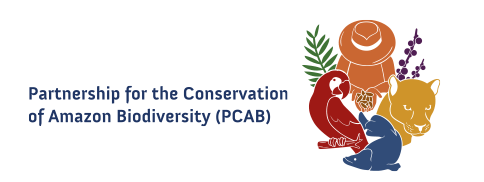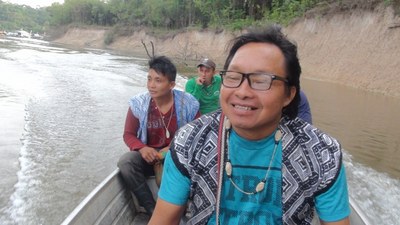Fishermen Indians share their knowledge in managing the fishery of threatened species
Since 2016, USAID has been supporting the development of value production chains as part of the strategy to implement Brazil’s national policy for indigenous lands environmental and territorial management. USAID funded an exchange program last October that gathered fishermen and Kaxinauá Indians from Acre, plus Deni and Kanamari Indians from the Xeruã river to witness and learn from the managed fishing of pirarucus by the Paumari Indians in the Tapauá river, South of the Amazonas State.
The Southern Amazon region is under great pressure from various economic fronts in the last decades from big infrastructure works, such as roads and hydropower plants, to mining, to illegal logging Local populations need alternatives to survive and add value to standing forests. The sustainable management of pirarucu is one of the most efficient ways to join conservation and income generation and has been so successful among Paumaris that a few years ago they won an award for it.
The fish can be salted to preserve it, its white and tender meat is highly appreciated and it is a quality source of proteins. Floodplain lakes are the natural habitat of pirarucus and the Paumaris are known for their fishing skills in those lakes. They monitored the growing numbers of the fish for five years until they have reached almost 10 times the initial figure, then, in 2013 they started fishing. A few years ago, they received an award from the Environment Ministry and this year they started sharing their expertise.
During four days, the visitors helped fishing and polished their skills in measuring, weighting and cleaning the fish. They have also learned about the right size of nets, and how to use and fix them.
The NGOs Operação Amazônia Nativa (Native Amazon Operation – OPAN) and Instituto de Estudos Brasileiros (Institute of Brazilian Studies – IEB), together with the Federation of the Organizations and Indigenous Communities of the Middle Purus river (Focimp) are partners in the pirarucu management project, which was also supported by the National Foundation of Indians (FUNAI).
According to the Executive-Secretary of Focimp, Antônio Santos, an Apurinã Indian, who is also involved in the USAID program, this sort of exchange with communities who are getting started with the fishing management is vitally important for the conservation of nature and for abundance of food for indigenous peoples: “We began with the pirarucu, but other species are going to increase their numbers, which in turn, will attract more animals and bring us more hunting.”
Santos argues that “we are accused of not producing anything, but we will show we are actually producing using the forest resources. Without forest we can´t live and with strong forests Indians are strong.”
The total annual fishing of Paumaris in 2017 was 16 tons, sold with the support of a Cooperative and delivered in the port of Manaus. After deducting the costs, the profit is shared among the 80 Indians involved in all steps of the monitoring.


